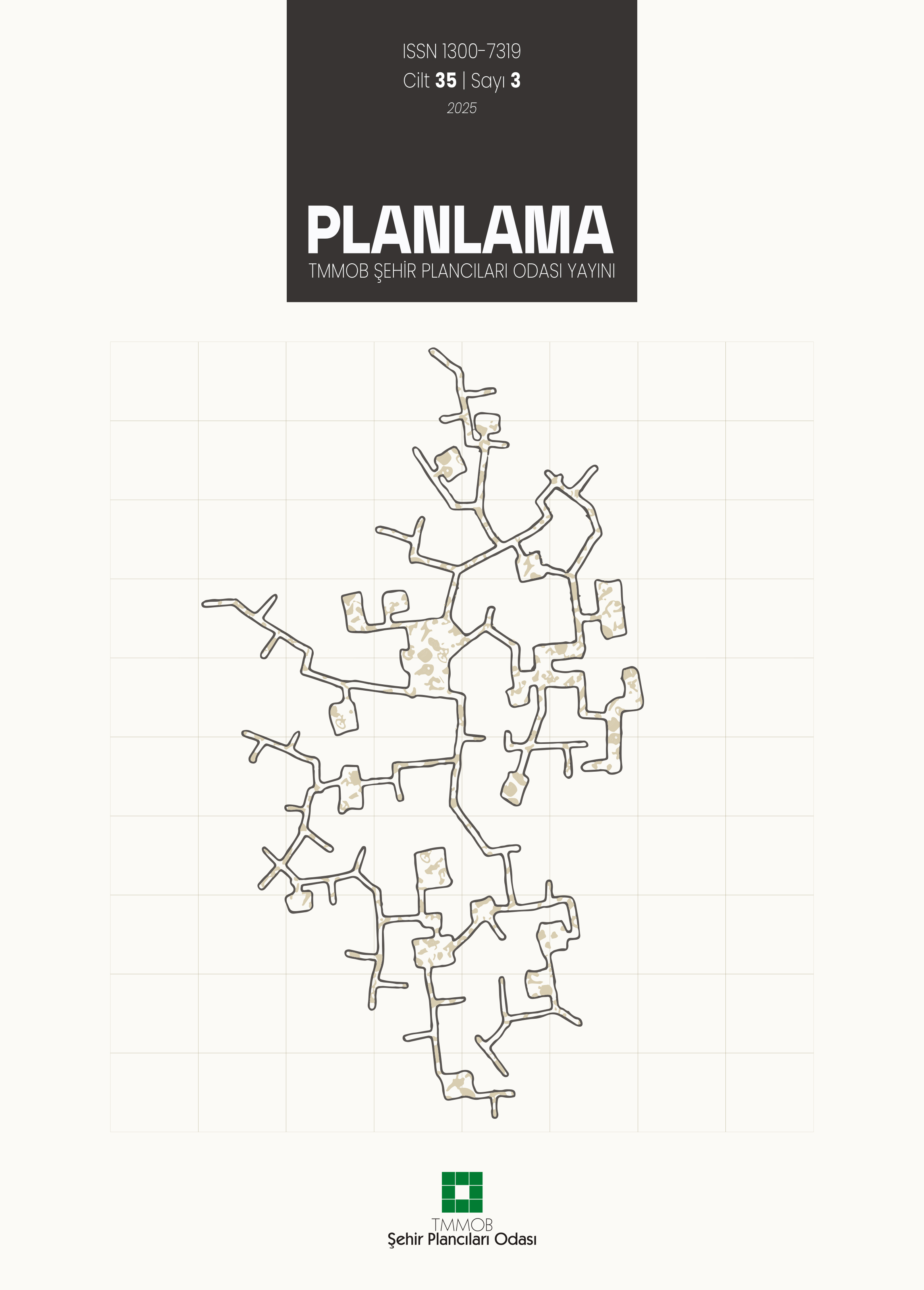Dünyadan Örnekler ile Kentsel Yayılım Modelleri
Sıla Balta, Emrah Yıldırım, Meryem AtikAkdeniz Üniversitesi, Mimarlık Fakültesi Peyzaj Mimarlığı Bölümü, AntalyaGünümüzde kentlerin hızlı gelişimi ile kent çevresi kırsal peyzajların ve kırsal karakterlerin değişime uğraması sonucunda, net bir kır-kent ayrımı yapılması mümkün olmamaya başlamıştır. Bununla birlikte artık sadece kentlerin değil kent dışı alanların da büyümeye başlamasıyla daha da karmaşık yapılar oluşmakta, kentin kırsal peyzajları etkilemesi ve değiştirmesi sonucunda yeni ara kesitler ve tanımlamalar ortaya çıkmaktadır. Bu noktada alan kullanımlarının net olarak belirlenemediği ve sınırlandırmanın zor olduğu kentsel ve kırsal alanlarda beliren geçiş ve yayılım bölgelerinin doğru planlama süreçleri ile kırsal ve kentsel karakterlerin korunması adına izlenmesi ihtiyacı doğmuştur. Yayılım çok yoğun bir bölgeden az yoğun bir bölgeye olan hareketi ifade etmekte olup, bu çalışma ile kentsel ve kırsal peyzajlar arasında kalan alan kullanımlarının değişmesi ve dönüşmesiyle yayılımın bir sonucu olarak ortaya çıkan yeni ara bölgelerde oluşan kentsel yayılım tanımları; Burlöv - İsveç örneği üzerinden kent çevresi yerleşim alanları (sub-urban), Şangay, Çin örneği üzerinden geçiş bölgesi (periphery), Gaboron, Afrika örneği üzerinden saçak peyzajlar (fringe) ve ABD örneği üzerinden kentsel-kırsal yayılım (sprawl) örnekleri ile incelenmiş ve kent çevresi kırsal yayılım peyzajları ve karakteristikleri için mekânsal bir çerçevede ifade edilmeye çalışılmıştır. Kentsel yayılımdan en çok etkilenen alanların kentlerin çevresindeki kırsal-tarımsal alanlar olması ve dolayısıyla bu alanların varlığını sürdürebilmesinin ortaya çıkan ara bölgelerin doğru planlanmasından geçtiği düşünülmektedir.
Anahtar Kelimeler: Kent-kır geçiş bölgeleri, kentsel peyzaj; kentsel yayılım; kırsal peyzaj; yayılım modelleri.
Urban Expansion Models with Examples from the World
Sıla Balta, Emrah Yıldırım, Meryem AtikAkdeniz University, Faculty of Architecture, Department of Landscape Architecture, AntalyaToday, due to the rapid development of cities and the change in rural landscapes and characters around the city, it has become impossible to make a clear rural-urban distinction. However, with the growth of not only cities but also non-urban areas, more complex structures are formed, and new intersections and definitions emerge due to the city's influence and change in rural landscapes. At this point, the need to monitor the transition and expansion zones that appear in urban and rural areas, where the use of land cannot be clearly determined and where it is difficult to limit, has arisen in order to protect the rural and urban characters with the right planning processes. Expansion refers to the movement from a very dense region to a less dense region. With this study, the definitions of urban sprawl formed in new intermediate regions that emerged as a result of sprawl with the change and transformation of land use between urban and rural landscapes; Burlöv - sub-urban settlementsthrough the Swedish example, periphery from the Shanghai, China example, Gaboron, fringe from the African example, and urban-rural from the USA example sprawl examples and the urban environment has been tried to be expressed in a spatial framework for rural scattering landscapes and characteristics. It is thought that the areas most affected by the urban sprawl are the rural-agricultural areas around the cities, and therefore the survival of these areas depends on the correct planning of the emerging intermediate zones.
Keywords: Urban-rural periphery, urban landscape; urban sprawl; rural landscape; sprawl models.
Makale Dili: Türkçe














